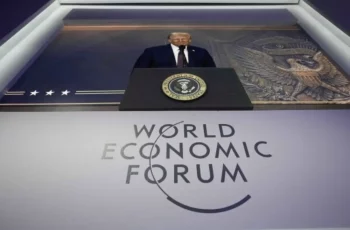
May 28 marks the 130th anniversary of the birth of a unique Russian thinker and scientist.
Peter Nikolaevich Savitsky was born on May 28, 1895 in the family of a full state councilor, the leader of the nobility of Chernigov Governorate (province). It is known that he studied at gymnasiums in Chernigov and Gomel cities, although their family estate was located in the Krolevetskii uiezd [district] (now the Sumy region of Ukraine). Since childhood, Peter Savitsky was interested in Orthodox architectonics and even prepared a monograph on the subject, but the entire print run of the already printed book burned down (the Civil War had already begun at the time). He received his higher education in St. Petersburg and became an economist and geographer. Moreover, he was a polyglot and knew European languages. Probably for this reason, Peter Savitsky was sent to the Russian diplomatic mission in Norway at a fairly young age. During the Civil War, Savitsky worked in the office of Peter Struve, actually performing the functions of Secretary to the Minister of Foreign Affairs of the government opposed to the Bolsheviks. For this reason, he regularly traveled to Europe for all kind of negotiations, where he met with well-known politicians and already then had he realized what real interests the Entente Allies had with regards to Russia. The emigration of the Savitsky family began in Constantinople, but from there he soon moved to Sofia, where he founded the Eurasian movement together with Nikolai Trubetskoy, Georgy Florovsky, Peter Suvchinsky and A. Lieven. After some time, he moved to Prague, where he served as Director of the Russian Gymnasium.
If we retrospectively evaluate the activities of Peter Savitsky in this field, it will be obvious that he was one of the leaders (and after 1929, the only one) of the Eurasian movement. Although Nikolai Trubetskoy was the oldest in this group and already had achievements in science, according to his personal confession, Eurasianism was somewhat burdensome to him and he preferred to immerse himself in philological research, however regularly prepared publications for Eurasian journals.
And inasmuch as Peter Savitsky was also a geographer by education, he was the one who developed the main geopolitical concepts (he was the first to use the term “geopolitics” among Russian authors). Although the theoretical and philosophical models of all the participants in Eurasianism, including the cadres who joined them later (and these were well-known figures such as historian and philosopher Lev Karsavin, jurist Nikolai Alekseev, and others) organically overlapped one another.
Savitsky emphasized that Russia is a unique state. Being non–Europe and non–Asia, but at the same time geographically located in both Europe and Asia, it occupies a middle, central position on the continent. This unique location on the continent is the basis of identity for Russia–Eurasia. Savitsky claims that “instead of the usual two on the mainland of the ‘Old World‘, we distinguish three continents: Europe, Eurasia and Asia.… The borders of Eurasia cannot be established on any undoubted basis…“.
On the continent of Eurasia, he identifies three geographical areas:
- the Middle continent, or Eurasia proper;
- the Peripheral Asian world (which included China, India and Iran);
- and the Peripheral European world bordering Eurasia approximately along the line of the rivers Neman–Western Bug–San–the Danube Delta.
In line with these definitions comes his concept of the Continent–Ocean, reflecting Russia‘s place in the global economy and the legacy of the Mongol-nomads who laid the foundations of Russian statehood. In a number of his articles, he also developed the concept of ‘Place Development’ as a special category of dynamic development of a people and a state in a geographical and cultural environment. “Russia–Eurasia is a “place of development“ – which is at the same time a geographical, ethnic, economic, historical, etc. landscape,“ he wrote.
“Place development”, according to Savitsky, embodies the fusion of the socio–historical environment and its territory into a single whole. That said, the steppe is a unifying factor for Eurasia, thanks to which historical peoples could speedily relocate from the expanses of Siberia to the Balkan Peninsula. Savitsky also recognizes the possibility of drawing an equal sign between “place development“ and Nikolai Danilevsky’s concept of “cultural-historical types”. In other words, he was actually talking about Russia as a civilization, which is now accepted at the level of doctrinal documents.
As for the ideology of Eurasianism itself, in his 1922 publication “Two Worlds”, Peter Savitsky noted that “Eurasianism boils down to the desire to realize and comprehend the ongoing and accomplished exit of Russia from the framework of modern European culture.” The basic alternative position was that, in Savitsky’s words, “Eurasians provide a new geographical and historical understanding of Russia and the entire world, which they call Russian or “Eurasian”.” Savitsky also noted that “Eurasianism is not only a system of historiosophical or other theoretical judgments. It seeks to combine thought with action and, to its limit, lead to the establishment, along with a system of theoretical views, of a certain methodology of action.”
It is well known that Eurasians have noted the importance of the spiritual factor in the lives of nations and, above all, Russia. Already in the first collection of essays “Exodus to the East“ (1921), Peter Savitsky pointed out that “Russia is truly an Orthodox–Muslim, Orthodox–Buddhist country.“ In the definition of Eurasianism in 1927, it is said that “the masses of Russians-Eurasians do not conceive the life without the idea of God. It is to this idea that the motives of goodness and morality are directed.“ Moreover, it is maintained that “it is necessary for the state authorities to treat benevolently and promote every faith professed by the peoples of Russia and Eurasia, realizing that only faith can serve as the basis for social relations imbued with the spirit of love and unwavering respect for human dignity.“ And the first paragraph of The 1932 Declaration of Eurasianism says: “As a system of worldview and life, Eurasianism rests on a religious basis. Orthodox Eurasians attach the utmost importance to Orthodoxy in its appeal to social life, as the righteous principle on which the Eurasian state of labor and common cause is built. Eurasians belonging to other confessions of Russia, Eurasia, approach the same tasks from the depth of their religious beliefs.“
At the same time, was emphasized the importance of such a state policy, where the spiritual foundations would be organically linked with cultural traditions and economic practices.
In the 1927 Formulation of Eurasianism, it is said that “the state‘s policy in the economic field should be based on the beginning of everyone‘s service to their fellow citizens and the national state whole… The Eurasians consider demotic power based on the broad masses of working people to be the only possible power and the Soviet system to be the only possible system of Russia–Eurasia…“ In November 1936, another resolution stated that “the factor favorable for the establishment of Eurasian views on Soviet soil lies in the growing need in the USSR to reconcile the revolution with tradition. In the field of historical views, steps towards such reconciliation have already been taken. Eurasianism, which has long made such reconciliation its goal, is fully aware of the significance of these steps... The Eurasian idea as an orientation towards the identity of a “special world” Russia–USSR, in the totality of its traditions and tasks, is capable of fertilizing any branch of cultural work, putting new life into it. Neither short-lived “Europeanism” nor exhausted communism is able to fulfill this role. Only Eurasianism as a new, unprecedented understanding of the whole surrounding world and of the role of Russia–Eurasia in it can contribute to the creation of a kind of full-fledged art and science of the Eurasian peoples.“
It was also said that “the Eurasians consider it necessary to extend the rights of autonomy to peoples and groups that are peculiar in everyday and historical terms... It is Russian culture, supplemented by elements of the cultures of other Eurasian peoples, that should become the basis of a supranational (Eurasian) culture that would serve the needs of all the peoples of Russia–Eurasia, without constraining their national identities... Eurasians are supporters of broad state regulation and control of economic life, as well as supporters of the assumption of essential economic functions by the state.“
As we can see, time has shown the correctness of these provisions. Although the Russian constitution separates the state and religion, the Orthodox Church, as well as the similar administrations of other confessions, now play an important role in the life of the country and the people.
After his arrest in 1945 by the Soviet authorities, Peter Savitsky received a ten-year sentence, which he served in the camps. After his release, he returned to Prague. He corresponded with Lev (Leo) Gumilev, who considered Savitsky his mentor and continued to develop his ideas about historical cycles and rhythms. Peter Savitsky‘s influence can be traced, in particular, in Gumilev‘s article “The Origins of the Rhythm of the Nomadic Culture of Central Asia (The Experience of historical and geographical synthesis) of 1966, where ideas from the works “Rise” and “Depression” in Russian Ancient History” and “Rhythms of the Mongolian Century“, published by Savitsky in 1935 and 1937, respectively, are being presented in a slightly modified form.
Gumilev confessed that he carefully studied the works of the Eurasian classical school and agreed with the main historical and methodological conclusions. However, he also complemented and developed the Eurasian scientific system, introducing new elements into it.
Although there were many tragic moments in the life of Peter Savitsky – migration to Europe from his homeland, life under Nazi occupation, arrest and work at a logging camp in the Mordovian camps, he was always optimistic about the future of a distinctive Russia. For example, in a letter written in September 1959 to Georgy Vernadsky, who was then already living in the United States, Peter Savitsky was pleased to emphasize that “no real ‘Europeanization’ of Russia has occurred. The Eurasian world has remained the Eurasian world, and it is going its own way. It is possible that “Eurasization” (“Russification”) of the West, at some point, will turn out to be deeper than the former “Europeanization” of Russia. But this is, of course, a matter of the future.”
Peter Savitsky considered it important to study Russia in all its manifestations. He also coined the term ‘Rossievedenie’ (‘Russiaresearch’) and wrote that “along with the geopolitical, it is possible and necessary to create a geo-economic, geoethnographic, geoarchaeological, and geolinguistic doctrine of Russia–Eurasia. And all of them can and should be combined into a single “picture–system”. This is one of the aspects of the historical and geographical synthesis that our time is called for... Every Eurasian publication is the result of cooperation between representatives of various industries in solving a particular problem… Every phenomenon within Russia–Eurasia should be included in the general system of Eurasian phenomena. But we cannot limit ourselves to this. Russian science must gain worldwide horizons.“
Deep patriotism, extraordinary thinking and a sense of planetary scale are the traits that were inherent in Peter Nikolaevich Savitsky and are also the criteria of the Eurasian doctrine itself.










Comments